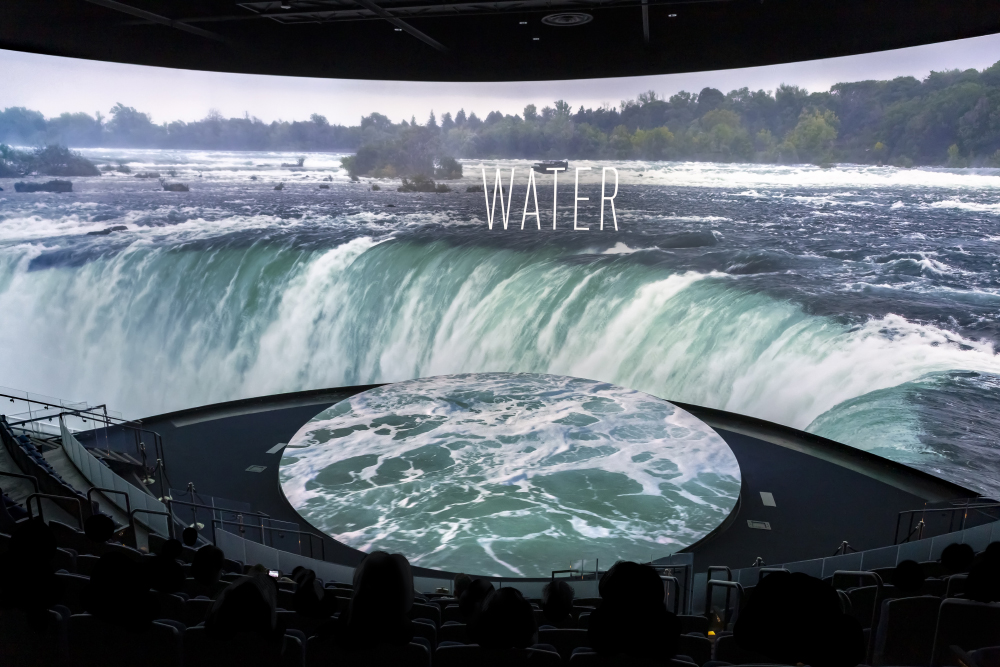An intriguing growth area for engineered sound in the lead-up to 2020 was in the exhibition space. Museums, aquariums, zoos, interactive retail, and other experience-based locations all began to recognize they were increasingly competing with a golden age in the content economy – i.e., we’ve never had so many movies, television, video games, and music readily available to keep us well entertained at home. Thus, innovation in AV offerings that couldn’t be experienced at home emerged in the exhibition market – and high-quality audio is a critical factor in the equation.
While the pandemic changed things for many industries, the exhibition space sees our eventual return to the “real world” as a massive opportunity to bring in new visitors, convert them into returning customers, and transform them into brand advocates. Sensational sound and impressive video that can only be seen in one location is something you return to – it’s something you tell others about.
Thus, there is no slowdown in the demand for expertly engineered audio in the exhibition space. If anything, its become more critical as people are now be quite tired of being entertained at home – they’re seeking more immersive experiences.
When considering approaches for this market, two installations come to mind. The first is the Aquarium of The Pacific Theater in Long Beach, CA. The aquarium recently opened its “aquarium of the future” called Pacific Visions, featuring a breathtaking immersive theater. And key to making the immersive component of the 300-person capacity theater work is perfectly positioned sound utilizing digital beam steering technology that can be used to address and improve the quality, as well as the future, of immersive sound.
The immersive experience offers listeners increased spatial discrimination over mono, stereo, and classic surround experiences. Engineers and producers can spread individual instruments, vocals, and effects in a much larger sound field, which opens the presentation and gives listeners more places to hear the elements of the program material.
The deployment of digital beamsteering in the immersive environment can provide a powerful tool for placing sound where the sound designer wants it, with accuracy. This results in the ability to better control the output at constant levels over long distances in various shapes and sizes of spaces. The accurate positioning of sound affords the designer numerous creative and unique opportunities. The simple recalling of a preset can instantly change the area of coverage or aim sound in multiple locations from a single device.
Digital beamsteering also provides a useful toolset in helping to solve many of the acoustical challenges these spaces may present, delivering intelligible sound along with the required quality and musicality demanded of a high-end audience experience.
Brian Edwards, owner of Edwards Technologies, the integration firm that designed and installed the theater AV and FX system at Aquarium of the Pacific, said at the time that the project is an example of the future of both the AV industry and of storytelling as a whole.
“What you see at the aquarium is the application of tomorrow’s tools,” Edward’s says. “Everyone is really happy with the result, and more than that, I believe this is the trend for AV and storytelling. This is where we’re going with technology, and everyone needs to be looking at it to see, and hear, how it can be done the right way.”
Edwards said this during an interview in 2020, and the sentiment is certainly just as valid today. Placing sound precisely where it’s wanted – on the audience – helps better ensure everyone in every seat walks away impressed. Again, this is what brings visitors back. It is what has them telling their friends about the experience.
But do all installations need to make use of digitally steerable audio to leverage the technology of tomorrow? No. There are many tools to achieve immersive experiences. Let’s look at another example in the Four Domes Pavilion in Wrocław, Poland.

The pavilion is home to the Museum of Contemporary Art branch of Poland’s National Museum, and it brings an immersive offering to visitors through its “See it, hear it, touch it” approach to experiencing art. For example, components considered traditional to art museums – framed paintings and statues – are augmented using projections, light, and sound. The museum says its vision for the space is to utilize brilliant lighting and imagery joined by powerful sound systems that can offer visitors an awakening of more of their senses.
It’s an exciting goal, and one the museum expertly achieves on the “hearing” sense using carefully placed point source loudspeakers. The installation uses 48 loudspeakers positioned on the side walls and ceiling to create a dense grid of sound sources. The number of sources, and the distance between them, are designed to provide the expected immersive experience.

These are just two success stories of exhibit spaces gaining a more immersive offering through engineered sound. There are many more tools that can be used to introduce creativity to the design process – and they can be quickly realized through gaining a partnership between end-user, consultant, integrator, and manufacturer.
A manufacturer that will custom design products based on a project’s needs, review plans, and offer new ideas is a valuable tool in the system design’s toolbox, helping to ensure consistently new and exciting ideas to offer for exhibit spaces as they evolve into more immersive offerings.















